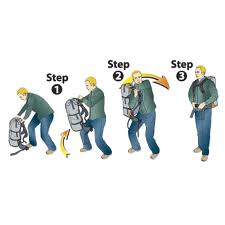 A very good friend of mine from Ohio emailed me last week and said that her soap box topic for the month of March for any non-profit who would listen was: “marketing is not resource development“. Oddly enough, I too spent the month of March telling many people the exact same thing. So, this morning I decided to climb to the top of my online soap box and yell as loudly as possible that “Marketing does not equal resource development, usually“.
A very good friend of mine from Ohio emailed me last week and said that her soap box topic for the month of March for any non-profit who would listen was: “marketing is not resource development“. Oddly enough, I too spent the month of March telling many people the exact same thing. So, this morning I decided to climb to the top of my online soap box and yell as loudly as possible that “Marketing does not equal resource development, usually“.
First, let me address the issue of why I used the word “usually”. Simply stated in two words . . . “Cause-related Marketing”.
For those of you who are still wrestling with what cause-related marketing is all about, I point you in Joanne Fritz’s direction. She has written a number blog posts on the subject including “Five Best Cause Marketing Programs For Local Nonprofits“. In this instance, cause-related marketing is a solicitation tool and can become a part of a non-profit organization’s comprehensive resource development plan.
So, what exactly is “resource development”?
Without looking up definitions in a Fundraising 101 textbook, I’ve always thought of resource development as a big machine with a number of cogs that work together. Those cogs have the following names:
- Prospect identification
- Prospect introduction
- Prospect cultivation
- Prospect solicitation
- Donor stewardship
In recent months, I have come across a number of non-profit organizations (esp. board volunteers), who believe that their agency simply needs to invest in more marketing to solve their revenue problems. The implication is that there is a direct relationship between dollars coming in and the agency’s visibility.
 Please don’t get me wrong. I am not “hating” on marketing people today. In fact, I love the marketing profession and spent three years working as a newspaper journalist. I love my marketing friends; however, I really want them to stop telling my non-profit friends that they have the cure for their revenue ills.
Please don’t get me wrong. I am not “hating” on marketing people today. In fact, I love the marketing profession and spent three years working as a newspaper journalist. I love my marketing friends; however, I really want them to stop telling my non-profit friends that they have the cure for their revenue ills.
Yes . . . yes . . . yes . . . It is true that better marketing will improve an agency’s visibility in the community, which can impact resource development activities like identification, cultivation, and stewardship. It is also true that in some instances like “cause-related marketing” that marketing becomes a solicitation tool. However, in the end, the reality is still:
Marketing ≠ Resource Development
Let me share a few examples of how marketing professionals and fundraising professions look at the same resource development issues and think differently:
Example #1: How to improve your existing annual campaign?
Marketing professional — give the donor something they really value (like a really nice premium gift). This will change the ROI calculation and result in more donors and increased dollars raised.
Fundraising professional — revise the agency’s case for support, provide better training and support to volunteer solicitors, recruit more solicitors to make more asks . . . these things collectively will allow for a higher quality solicitation as well as more solicitations all of which will result in increased dollars raised.
Do you see the difference in approach?
Example #2: How to engage more prospects?
Marketing professional — purchase advertising (or secure it for free using a public service announcement strategy) in local newspapers, radio and cable television. Tell people about your agency and those who are interested will opt-in using a telephone number, email or website address provided in the ad.
Fundraising professional — engage board members, volunteers, and existing donors in helping you identify their friends who share a common passion for your organization’s mission. Once those prospects are identified, ask those same volunteers and donors to invite their friends to participate in mission-focused activities like an open house, reception, event or cup of coffee with the executive director.
Do you see the different in approaches?
 In the for-profit world, those corporations sell “things” (e.g. widgets), and those products are valued by consumers. So, when someone sees a marketing pitch around something they want, then it triggers this impulse to purchase. In my humble opinion, this is not the same dynamic at play when it comes to donors who make charitable contributions to non-profit organizations.
In the for-profit world, those corporations sell “things” (e.g. widgets), and those products are valued by consumers. So, when someone sees a marketing pitch around something they want, then it triggers this impulse to purchase. In my humble opinion, this is not the same dynamic at play when it comes to donors who make charitable contributions to non-profit organizations.
This is not to say that an impactful marketing program isn’t important because it surely is. However, I really want board volunteers to stop pinning their hopes of increased revenue solely on marketing efforts because:
- “hope” is NOT a strategy, and
- there is no substitute for board members and fundraising volunteers participating in a comprehensive resource development program.
I understand that sitting down and asking people for money can be scary, but it is the only thing in the universe that has ever worked. So, let’s stop “hoping” and looking for ways around it, and let’s start building a resource development machine that is supported by an effective marketing program.
So, do you disagree with me? I know there are tons of people out there who do. If so, please scroll down and share your thoughts using the comment box. Do you agree with me? If so, please scroll down and use the comment box to provide additional examples of how marketing professionals and fundraising professionals approach similar resource development questions from different angles.
We can all learn from each other. I am open-minded and willing to consider other viewpoints.
Here’s to your health!
Erik Anderson
Founder & President, The Healthy Non-Profit LLC
www.thehealthynonprofit.com
erik@thehealthynonprofit.com
http://twitter.com/#!/eanderson847
http://www.facebook.com/eanderson847
http://www.linkedin.com/in/erikanderson847


























